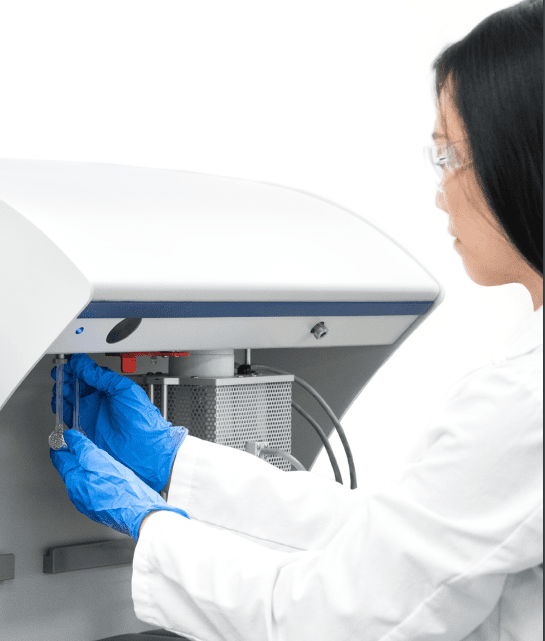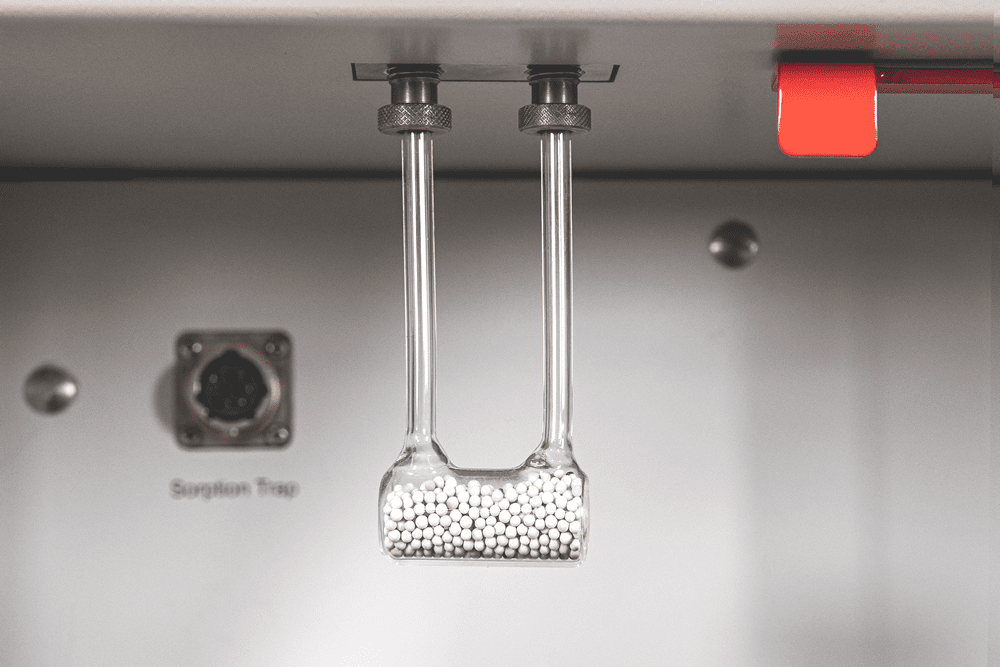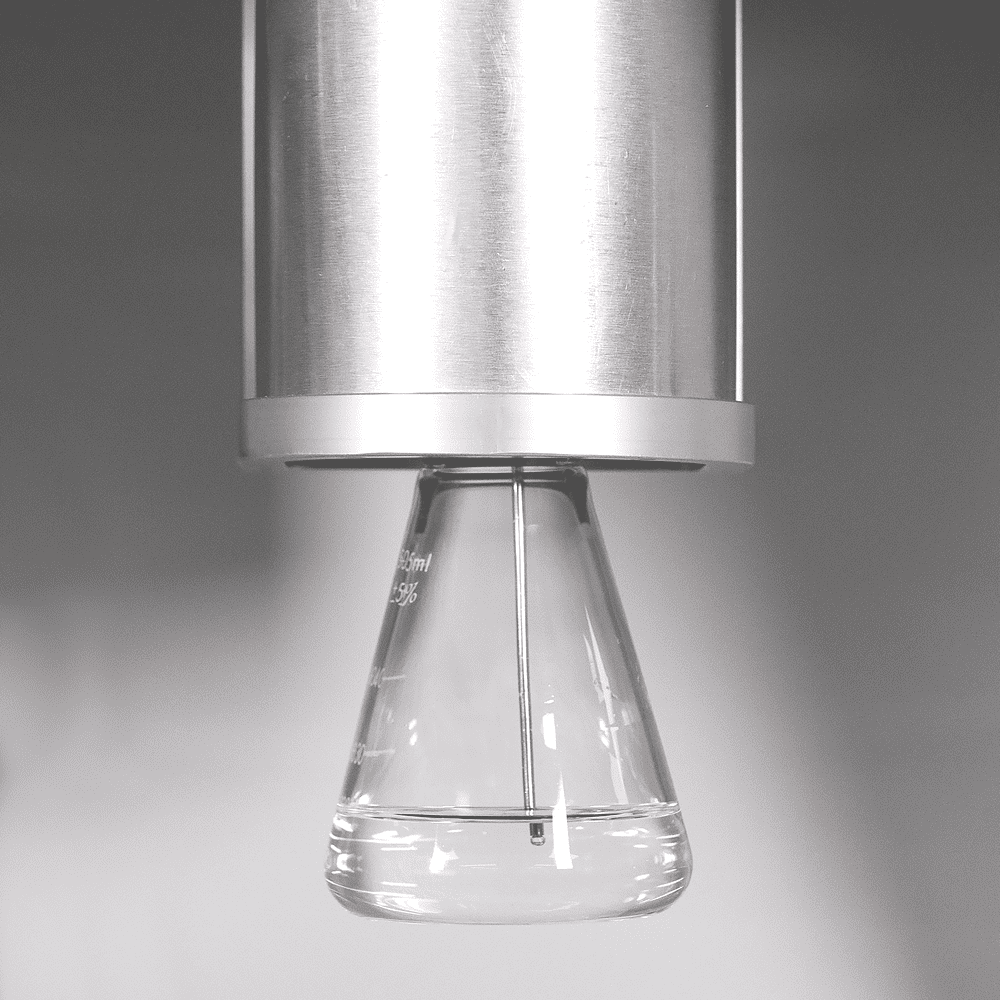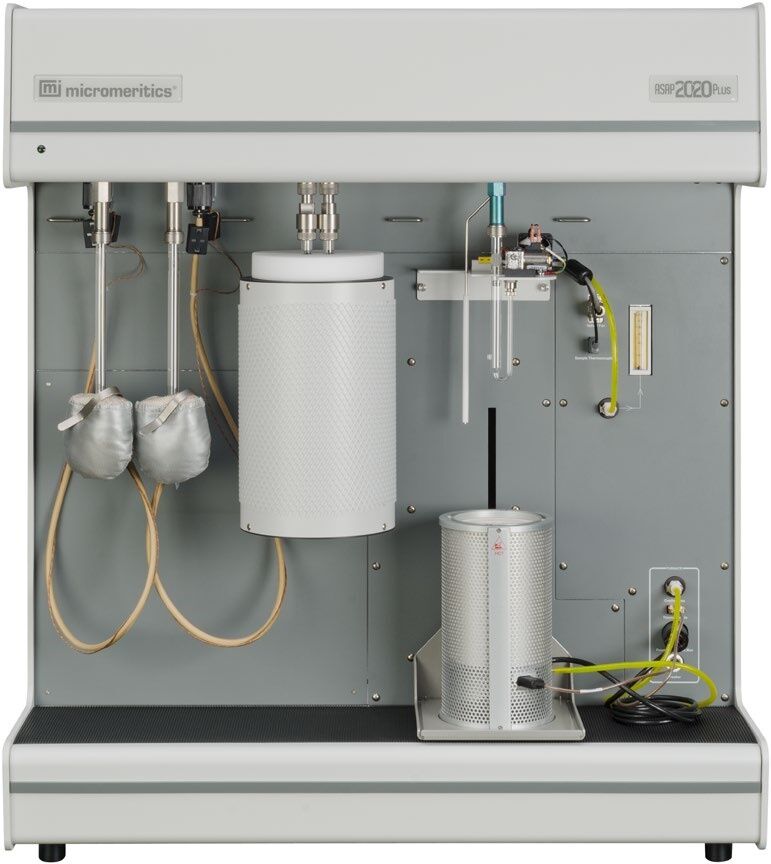Micromeritics Autochem III Chemisorption Analyser
Micromeritics AutoChem series offer fully automated catalyst characterisation system for highly precise chemical adsorption and temperature programmed reaction studies.









Micromeritics Autochem III Chemisorption Analyser
Micromeritics AutoChem series offer fully automated catalyst characterisation system for highly precise chemical adsorption and temperature programmed reaction studies.
| Manufacturer | Micromeritics |
|---|---|
| Product Series | Micromeritics AutoChem |
| Measurement principle | Chemisorption |
| Application | Surface Area & Porosity |
| Temperature | -100 °C to 1200 °C with CryoCooler |
| Preparation gases | 6 inlets: H2, O2, He, Ar, H2/Ar, and more |
Product Overview
All NEW AutoChem III is a catalyst characterisation laboratory in a single instrument. This highly automated and highly accurate system is ideal for chemisorption and temperature-programmed reactions. The new design saves time, makes the most sensitive, reproducible measurement and enhances operator safety.
The NEW AutoCool is an integrated gas-fed system that rapidly cools sample tubes before and during experiments. AutoCool is typically 30 minutes faster than alternative systems and requires no liquids or external support.
The NEW AutoTrap removes moisture without cryogenic liquids such as liquid Nitrogen. It effectively traps vapour and requires no manual slush bath preparation. Traditional methods for vapour capture require the time-intensive process of slush-bath preparation through the manual mixing of liquid nitrogen with isopropanol. The zeolite bed of the AutoTrap effectively captures vapours, can be used for several experiments without interruption, and can be regenerated in situ.
Automated detector calibration makes accuracy simple by using patented gas blending and a dedicated reference stream flow controller. Patented new KwikConnect fittings make sample tube installation faster, easier, more reliable and reduces the risk of breaking sample tubes. With 18 available gas streams, users are always ready to run their next reaction.
The Micromeritics AutoChem is the most widely used and highly cited system for characterising catalyst reactivity. Users can perform a variety of experiments which include pulse chemisorption, temperature-programmed reduction (TPR), desorption (TPD), oxidation (TPO), and reaction analyses. Catalytic properties such as percent of metal dispersion, active metal surface area, acid strength, surface acidity, distribution of strength of active sites, BET surface area can quickly be determined.
- Demonstration video
- BENEFITS
- APPLICATIONS
Demonstration video
BENEFITS
- Temperature-controlled corrosion-resistant detector is compatible with corrosive gases and inherently protected from gas leaks that can destroy alternative designs, providing high reliability and long operational life
- High sensitivity thermal conductivity detector (TCD) is 2x as sensitive as alternatives so you can measure smaller samples volumes, detect secondary reactions, and have greater confidence in your results
- 18 total gas inlets six each for preparation, carrier, and loop gases permit sequential experiments of different types and saves time between experiments
- Exclusive AutoTrap provides superior moisture removal for TPR experiments with a system that is effortless to use and saves hours per day 18 total gas inlets six each for preparation, carrier, and loop gases permit sequential experiments of different types and saves time between experiments
- Dynamic clamshell furnace provides temperature control up to 1200°C and controlled heating rates from 0.1°C/min to 100°C/min with the lowest available temperature overshoot
- Integrated AutoCool cools the furnace and sample quicker than forced air alone without the use of cryogenic liquids, saving an average of 30 minutes per experiment
- Internal gas temperature control in four separate zones prevents condensation during studies with vapor and improves overall signal stability
- The lowest internal gas volume provides the highest peak resolution and minimizes tailing when changing gas stream composition.
- KwikConnect retention system makes sample tube mounting quick, easy, and safe with no threaded connections and half as many separate pieces as traditional designs
APPLICATIONS
HYDROGEN
The development of efficient and effective catalysts is necessary to the continued development of CO2 mitigation and the hydrogen economy that will enable a sustainable energy future. The AutoChem III is a useful tool to optimise adsorption and dissociation of H2/O2 on electrolysis electrodes, show whether desorption occurs near reaction conditions, quantify acid or base sites to optimise reactivity and selectivity, and more.
FUEL CELLS
Platinum-based catalysts including Pt/C, PtRu/C, and PtRuIr/C are often characterised by temperature-programmed reduction to determine the number of oxide phases and pulse chemisorption to calculate: metal surface area, metal dispersion and average crystallite size
PARTIAL OXIDATION
Manganese, cobalt, bismuth, iron, copper, and silver catalysts used for the gas-phase oxidation of ammonia, methane, ethylene, and propylene are characterized using: Temperature-programmed oxidation and desorption, heat of desorption & dissociation of oxygen.
CATALYTIC CRACKING
Acid catalysts such as zeolites are used to convert large hydrocarbons to gasoline and diesel fuel. The characterization of these materials includes: Ammonia chemisorption and temperature-programmed desorption.
CATALYTIC REFORMING
Catalysts containing platinum, rhenium, tin, etc. on silica, alumina, or silica alumina are used for the production of hydrogen, aromatics, and olefins.
ISOMERISATION
Catalysts such as small-pore zeolites (mordenite and ZSM-5) containing noble metals (typically platinum) are used to convert linear paraffins to branched paraffins.
HYDROCRACKING
Hydrocracking catalysts typically composed of metal sulfides (nickel, tungsten, cobalt, and molybdenum) are used for processing feeds containing polycyclic aromatics that are not suitable for typical catalytic cracking processes.
WATER GAS SHIFT REACTION
The water-gas shift reaction is an important element in the hydrogen lifecycle and the push toward net-zero technologies. The combination of catalysts, often copper-zinc-alumina and iron-chromia, are characterized by TPR and pulse chemisorption to maximise activity.
Product Enquiry
SPEAK TO OUR AUSTRALIAN AND NEW ZEALAND TEAM
If you would like to enquire about this product, fill out this form and one of our product specialists will contact you shortly.
If you need help in the operation or repair of an instrument then please contact the Customer Help Centre directly.
Please note, product enquiries are only applicable to Australia, New Zealand, Papua New Guinea and Fiji
Or call us instead at (02) 9541 3500




 02 9541 3500
02 9541 3500
